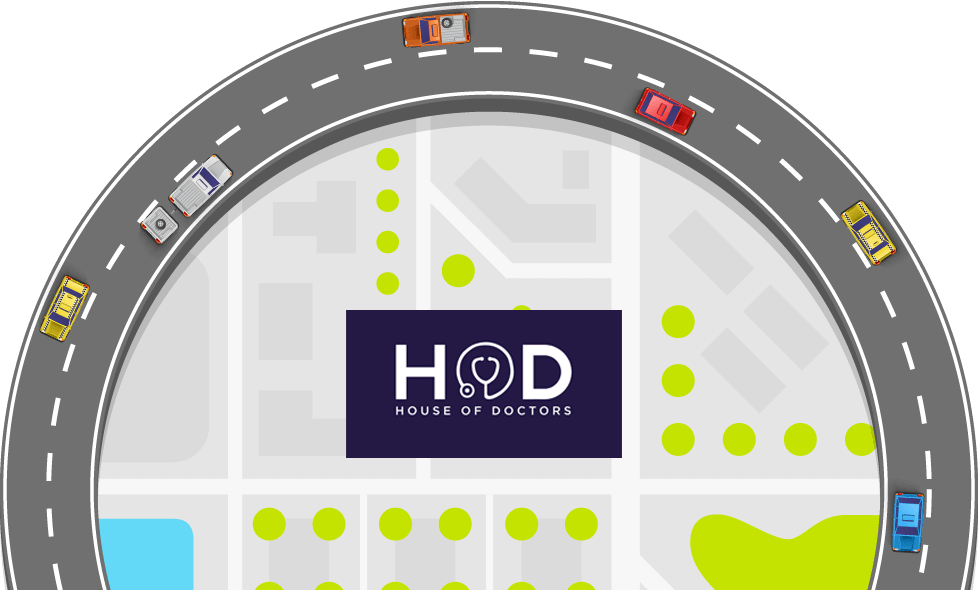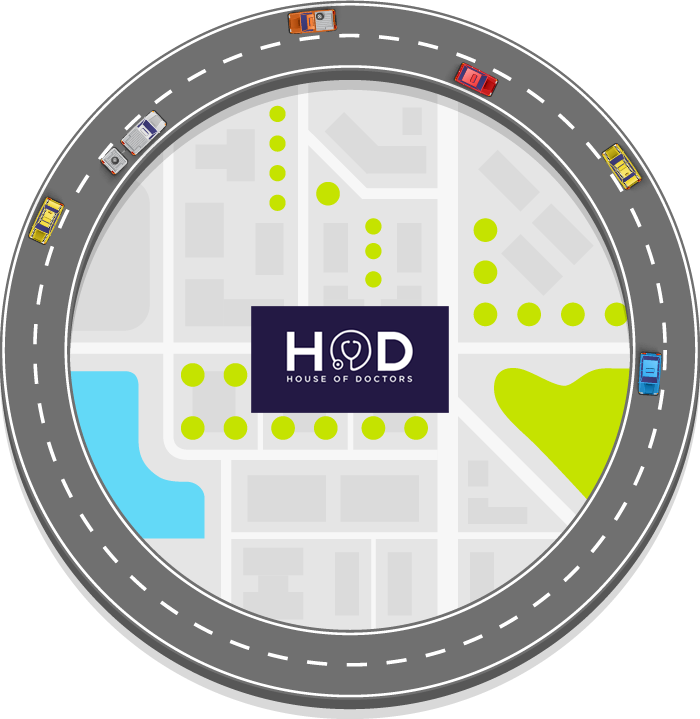What is Angiography?
Angiography is a medical imaging technique used to visualize the inside of blood vessels, including arteries, veins, and heart chambers. By producing detailed images, angiography helps doctors diagnose and treat various conditions related to the blood vessels, such as blockages, narrowing, or malformations. It plays a crucial role in identifying cardiovascular diseases, aneurysms, and vascular problems in different parts of the body.
The procedure involves the use of a contrast dye and X-rays to capture real-time images of blood flow within the vessels, making it an essential diagnostic tool for patients with suspected heart disease, stroke, or peripheral artery disease (PAD). For those seeking the angiography test in Mumbai, it is highly recommended for individuals showing symptoms of cardiovascular or vascular issues, as it provides vital information for proper diagnosis and treatment.
How Does Angiography Work?
The process of angiography relies on the injection of a contrast dye (usually iodine-based) into the bloodstream. This dye is visible on X-rays and allows doctors to see how blood is flowing through the vessels and to identify any blockages, narrowing, or other abnormalities. The angiogram test is usually performed using X-ray imaging technology, but it can also be done using advanced techniques such as computed tomography (CT) or magnetic resonance imaging (MRI).
Common Uses of Angiography
- Heart Disease Diagnosis: Angiography is often used to diagnose coronary artery disease (CAD), where plaque buildup causes narrowing of the arteries. It helps doctors determine whether a patient may require a procedure like angioplasty or stenting.
- Stroke Detection: Angiography of the brain’s blood vessels (cerebral angiography) can detect blockages or aneurysms, helping doctors prevent strokes or treat them effectively.
- Peripheral Artery Disease (PAD): Peripheral angiography is useful for patients with leg pain or difficulty walking, as it identifies blocked or narrowed arteries in the legs or arms.
Why Choose House of Doctors as the Top Hospital for Angiography in India - Mumbai?
When it comes to finding the best hospital for angiography in Mumbai, House of Doctors stands out for its exceptional medical care, advanced technology, and highly skilled team of specialists. Our hospital is equipped with state-of-the-art facilities to perform accurate and precise angiography procedures, ensuring early detection and effective treatment of cardiovascular and vascular conditions.
- Advanced Technology:
1. Equipped with the latest imaging technology for precise angiography procedures.
2. Utilizes both X-ray and advanced techniques like CT and MRI for comprehensive assessments. - Expert Team:
1. A highly skilled team of cardiologists and vascular specialists with extensive experience in angiography.
2. Continuous training and education to stay updated with the latest advancements in the field. - Patient-Centered Care:
1. Personalized care tailored to individual patient needs, ensuring comfort and understanding throughout the process.
2. Dedicated support staff available to answer questions and guide patients through their treatment journey. - High Safety Standards:
1. Commitment to maintaining the highest safety protocols and hygiene standards during procedures.
2. Comprehensive pre-procedure assessments to ensure patient readiness and minimize risks. - Accurate Diagnosis and Treatment:
1. Quick and accurate diagnosis of cardiovascular conditions, enabling timely intervention and treatment.
2. Multidisciplinary approach to managing complex cases, involving collaboration between various specialists. - Positive Patient Outcomes:
1. Proven track record of successful angiography procedures with high patient satisfaction rates.
2. Continuous monitoring and follow-up care to ensure long-term health and recovery.
Angiography Test Price in Mumbai
The angiography test is a crucial diagnostic procedure that helps visualize the blood vessels and assess the overall health of the cardiovascular system. In Mumbai, the cost of angiography can vary based on several factors, including the type of angiography performed, the hospital or diagnostic center's reputation, the technology used, and any additional services provided.
Factors Affecting the Price
- Type of Angiography: The price may differ based on the specific type of angiography being performed, such as coronary angiography, cerebral angiography, or peripheral angiography. Each type requires different levels of expertise and equipment, impacting the overall cost.
- Hospital Reputation: Well-established hospitals with a strong reputation for quality care may charge higher fees compared to smaller or lesser-known facilities. However, opting for a reputed hospital often ensures better service and experienced medical professionals.
- Technology and Equipment: The use of advanced imaging technologies, such as digital subtraction angiography (DSA) or 3D imaging, can also influence the cost. Hospitals that invest in cutting-edge equipment may charge more for their services.
- Additional Services: Costs may also include pre-procedure consultations, follow-up appointments, and any necessary laboratory tests. It’s essential to inquire about what is included in the quoted price.
If you are considering an angiography test in Mumbai, it’s crucial to research and compare prices across various hospitals and diagnostic centers. Prioritize quality and expertise alongside cost, as accurate diagnosis and effective treatment are paramount for cardiovascular health. Always consult with your healthcare provider to ensure you make an informed decision regarding your angiography needs.
Surgical Treatments Available at House of Doctors
How Should I Prepare for a CT Coronary Angiogram procedure?
Preparing for a CT coronary angiogram is important to ensure the procedure goes smoothly and gives accurate results. Here are some simple steps to help you get ready for your angiogram test:
- Follow Doctor's Instructions: Your doctor will give you specific instructions on how to prepare. It's important to follow these carefully to avoid any complications.
- Fasting Before the Test: You may be asked to fast for several hours before your CT coronary angiogram. This means you should not eat or drink anything during this time. Usually, you will be told to stop eating at least 4-6 hours before the procedure.
- Inform About Medications: Let your doctor know about any medications you are taking. Some medications, especially those for diabetes or blood thinners, may need to be adjusted before the angiogram test. Your doctor will guide you on what to do.
- Discuss Allergies: If you have any allergies, especially to iodine or contrast dye, inform your doctor. The contrast dye used in the CT coronary angiogram can cause allergic reactions in some people, and your doctor may take precautions.
- Hydration: Drink plenty of water the day before your test, unless your doctor advises otherwise. Staying hydrated can help your kidneys process the contrast dye used during the procedure.
Preparing for a CT coronary angiogram is straightforward, and following these steps will help ensure a successful procedure. If you have any questions or concerns about the preparation or the procedure itself, don’t hesitate to reach out to your healthcare provider. They are there to help you every step of the way!
Your Journey at House of Doctors
Why choose House Of Doctors?


Surgeon

Infrastructure

Mediclaim

Pick Up and Drop

Available
Types of Angiography
What is the Recovery Time After Angiography?
After an angiography procedure, the recovery time can vary from person to person, but here are some general points to keep in mind:
- Immediate Recovery: Once the angiography is completed, you will be moved to a recovery area. Here, healthcare staff will monitor you for a few hours to ensure there are no complications. During this time, you may be asked to lie still to help the insertion site heal.
- Going Home: Most patients can go home on the same day as the procedure. However, it’s important to arrange for someone to drive you home, especially if you received sedation or anesthesia, which may make you feel drowsy.
- Rest at Home: Once you are home, it's essential to rest. You may feel tired, and some people experience minor bruising or soreness at the site where the catheter was inserted. This is normal and should gradually improve over the next few days.
- Return to Normal Activities: Light Activities You can usually return to light activities, like walking, within a day or two after the angiography.
- Monitor for Symptoms: Keep an eye on how you feel after the procedure. If you notice any unusual symptoms, such as excessive bleeding, severe pain, or signs of infection (like fever or redness at the catheter site), contact your doctor immediately.
- Follow-Up Appointments: Make sure to attend any scheduled follow-up appointments with your doctor. They will check your recovery progress and discuss any further treatments if needed.
Angiography - FAQs
What is angiography?
Angiography is a medical imaging technique used to visualize the inside of blood vessels, including arteries and veins. It involves the injection of a contrast dye and the use of X-ray imaging to capture detailed images of blood flow, helping diagnose conditions like blockages, aneurysms, and vascular malformations.
Why is angiography performed?
Angiography is performed to diagnose and evaluate various vascular conditions, such as coronary artery disease, peripheral artery disease, stroke, and other cardiovascular issues. It helps doctors determine the location and severity of blockages or abnormalities.
Is angiography painful?
Most patients experience minimal discomfort during the procedure. You may feel a slight pinch when the catheter is inserted and a warm sensation as the contrast dye is injected. Sedation is often provided to help you relax.
What are the risks associated with angiography?
While angiography is generally safe, there are some risks involved, including:
- Allergic reactions to the contrast dye
- Bleeding or infection at the insertion site
- Damage to blood vessels
- Kidney damage in patients with pre-existing kidney issues
What happens if I have allergies?
If you have known allergies, especially to iodine or shellfish, it’s crucial to inform your doctor prior to the procedure. They may take precautions, such as using alternative contrast materials or providing medications to minimize allergic reactions.
How much blockage requires a stent?
The decision to place a stent is typically based on the severity of the blockage in the coronary arteries, as well as the patient's symptoms and overall health. Generally, a stent may be recommended if:
- 70% or More Blockage:
A blockage of 70% or more in a coronary artery is often considered significant and may require a stent to restore proper blood flow to the heart.

















